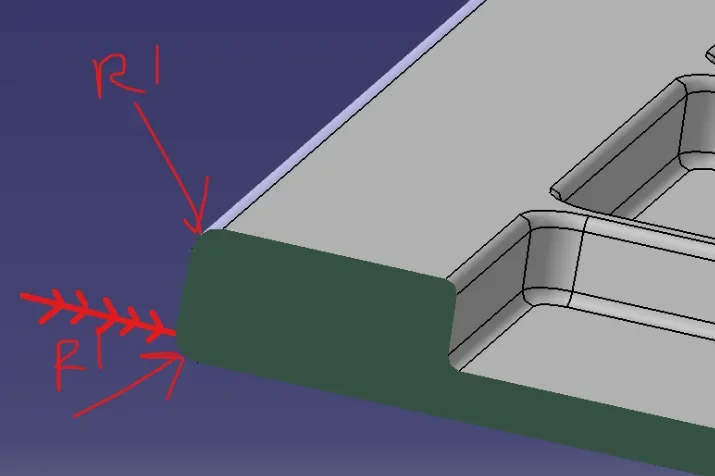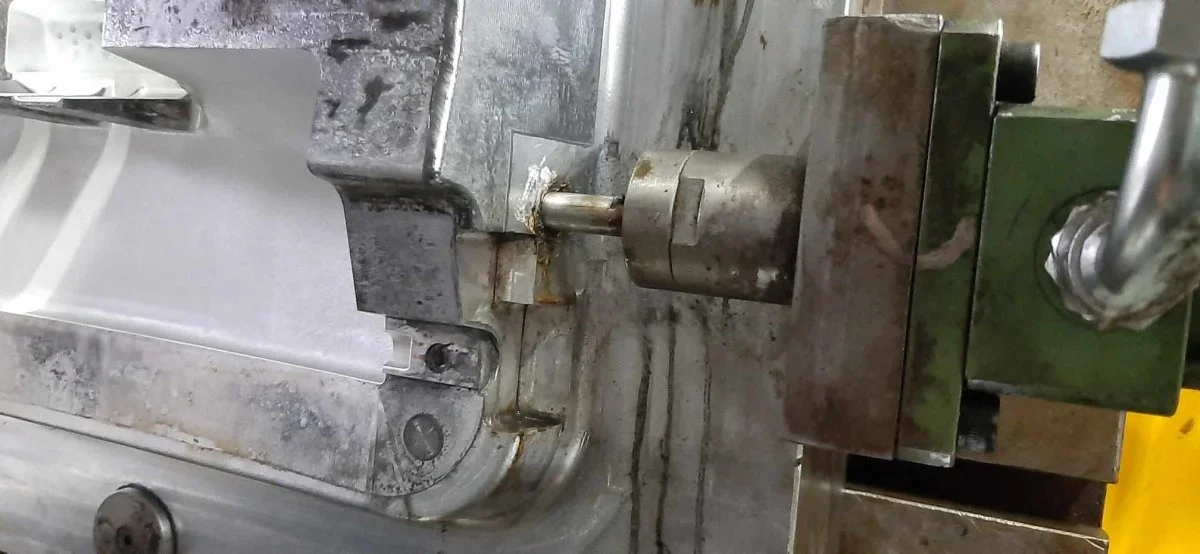francescodue
Guest
I press that I couldn't open the file that you attached, so I will only base myself on the images that you have attached and victorious.
in the fourth image placed by victorious (with the rays indicated by hand): if the opening of the mold takes place on the lower surface (opposed to where the trays are), you cannot put a radius. You'd create a subsquadro.
Moreover the wall under the trays has a thickness while the edge has an excessive.
to avoid it, in my opinion, creates the solid first, the sforms, downloads the trays and the sforms and after you create a "guscio" removing the lower surface (I don't know the name of the command). This makes you a solid with uniform thickness at all points. and if you first add the radiations on the edges, the program adds the correct internal ones with the specified thickness.
only after adding the tabs.
about the tabs, in the second and third image you posted there is a small pocket between the tab and the edge: if possible I would tie the aletta so as to remove it. the mold would be easier with less processing.
about the reforms: you can choose different reference plans. if you take the closing mold you will have to indicate tenths of degree, to contain the moving of the surfaces. if you take the one from which the protrusion of the aletta can indicate degrees ( easier to manage) and the shift will be minimal.
the rule, with the sforms, is that you have to see all the surfaces both on one side and on the other.
If it doesn't happen, you have to check if there's a subframe or if you've forgotten a surface.
in any case for important details, such as these fins, you have to add ray everywhere.
At least those of the attachment must be "important".
in the fourth image placed by victorious (with the rays indicated by hand): if the opening of the mold takes place on the lower surface (opposed to where the trays are), you cannot put a radius. You'd create a subsquadro.
Moreover the wall under the trays has a thickness while the edge has an excessive.
to avoid it, in my opinion, creates the solid first, the sforms, downloads the trays and the sforms and after you create a "guscio" removing the lower surface (I don't know the name of the command). This makes you a solid with uniform thickness at all points. and if you first add the radiations on the edges, the program adds the correct internal ones with the specified thickness.
only after adding the tabs.
about the tabs, in the second and third image you posted there is a small pocket between the tab and the edge: if possible I would tie the aletta so as to remove it. the mold would be easier with less processing.
about the reforms: you can choose different reference plans. if you take the closing mold you will have to indicate tenths of degree, to contain the moving of the surfaces. if you take the one from which the protrusion of the aletta can indicate degrees ( easier to manage) and the shift will be minimal.
the rule, with the sforms, is that you have to see all the surfaces both on one side and on the other.
If it doesn't happen, you have to check if there's a subframe or if you've forgotten a surface.
in any case for important details, such as these fins, you have to add ray everywhere.
At least those of the attachment must be "important".


